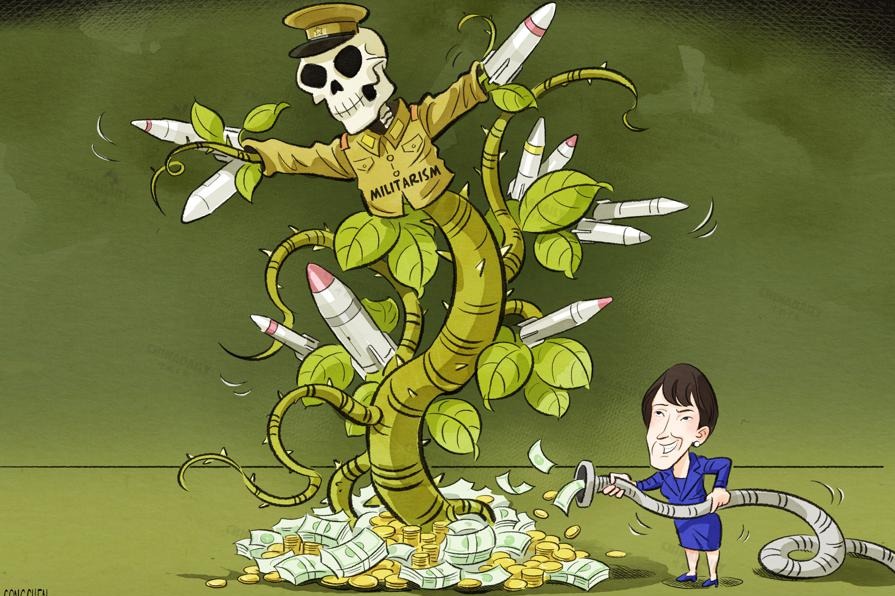The EU 'new trio' industrial subsidy policy in the name of green transition
By Shi Xiaoli, Cui Yunfei | chinadaily.com.cn | Updated: 2024-08-27 15:02

INTRODUCTION
On August 20, 2024, the European Commission disclosed the draft decision on the anti-subsidy investigation (AS689) against battery electric vehicles (BEV) for passengers originating in China, disclosing that it intends to impose definitive countervailing duties of 17% -36.3% on Chinese exporters (the individual duty rate granted to Tesla is 9%). The case was launched publicly by European Commission President Ursula von der Leyen in her State of the Union Address on September 13, 2023, with the clear aim of promoting transition and development of the EU electric vehicle industry. The European Commission, rather uncommonly, initiated this ex-officio anti-subsidy investigation on October 4, 2023. The international community paid close attention to it. Many EU Member States, automotive industry organizations and companies, think tanks, and scholars have expressed their views, pointing out that this anti-subsidy investigation serves as protectionism in the name of "fair trade” and that the development of the EU BEV industry should not be protected from competition.
In fact, such investigation indicates the EU's attempt to seize the upper hand in the new round of global competition to address climate change and achieve a green transition. In recent years, many countries have listed the "new trio” industries, i.e., photovoltaic products, electric vehicles and lithium-ion batteries, as priorities for development, and the EU is one of the typical examples. While strongly condemning the implementation of subsidies under the US Inflation Reduction Act, the EU is providing various subsidies for its local "new trio” industries. Especially after the release of the European Green Deal in 2019, the EU has increasingly focused on the clear energy transition, vigorously promoting the development of new energy industries, including the "new trio”. In 2020, the European Commission issued the European Industrial Strategy, which clearly stated that the EU would provide investment and financing support for the green transition of industries. In fact, the EU's purpose of accelerating the development of new energy industries such as the "new trio” is not only to achieve the United Nations' goal of sustainable development, but also to take the opportunity to enhance the global competitiveness of the EU industry and seek a world-leading position. In this process, the EU implemented a significant number of industrial subsidy policies.
This article analyzes and sorts out the EU's "new trio” policies from a historical perspective and fully unveils the EU's practice of providing various subsidies under the disguise of the green transition.
I. ENERGY INDUSTRY POLICIES AND STRATEGIES HAVE BEEN IMPLEMENTED SINCE THE EARLY STAGE OF EUROPEAN ECONOMIC INTEGRATION
A. THE COORDINATION OF INDUSTRIAL POLICIES, ESPECIALLY IN THE ENERGY INDUSTRY, AS THE ORIGIN OF EUROPEAN ECONOMIC INTEGRATION
Europe was one of the earliest regions in the world to implement energy industry policies. European economic integration was born out of the coordination of industrial policies among member states. In 1951 and 1957, six European countries signed the Treaty establishing the European Coal and Steel Community, the Treaty establishing the European Atomic Energy Community, and the Treaty establishing the European Economic Community, respectively. The aim was to coordinate member states' industrial regulations and development through the implementation of common policies. Notably, Articles 92 to 94 of the Treaty Establishing the European Economic Community clearly and systematically stipulated the state aid system applicable to all sectors for the first time, which formed the foundation of the current state aid system.
In 1974, the Council of the European Communities established by the three major European Communities adopted the Resolution concerning Community Energy Policy Objectives for 1985, setting the goal of reducing dependence on energy imports to ensure energy security.
In summary, Europe had implemented common policies for energy industry in the early stages of integration and began to focus on energy independence. During this period, Europe established a unified basic framework for the state aid system, which oversaw state aid to member states while also allowing for state aid that shall be compatible with, or may be considered to be compatible with the internal market.
B. EMPHASIS ON THE DEVELOPMENT OF NEW AND RENEWABLE ENERGY SOURCES SINCE THE 1980S
The Council of the European Communities issued the Resolution concerning Community Energy Policy Objectives for 1990 and Convergence of Policies of the Member States, and the Resolution on a Community Orientation to Develop New and Renewable Energy Sources in 1980 and 1986, respectively. These resolutions formed the basic framework for Europe's new energy common policy. During this period, the European common energy policy began to focus on the development and utilization of new and renewable energy sources to achieve the diversification of Europe's energy supply and ensure energy security and full accessibility.
II. AFTER THE ESTABLISHMENT OF THE EU, NEW ENERGY AND RENEWABLE AND RENEWABLE ENERGY WERE PROMOTED AS STRATEGIC PRIORITIES
In 1992, European countries signed the Maastricht Treaty (also known as the Treaty on European Union) to establish the European Union (EU). European economic integration entered into a higher stage of development. Improving industrial competitiveness became one of the main objectives of EU policy coordination. The Treaty Establishing the European Economic Community was renamed the Treaty Establishing the European Communities, and Article 130 was added, which explicitly required the EU and its member states to create conditions for the development of industrial competitiveness.
After the establishment of the EU, the European Commission successively issued a number of energy industry policies and progressively increased its attention to new energy industries covering "new trio”.
A. NEW AND RENEWABLE ENERGY SOURCES AS POLITICAL PRIORITIES OF THE EU
The European Commission released White Paper: an Energy Policy for the European Union and Energy for Future: Renewable Sources of Energy-for a Community Strategy and Action Plan in 1995 and 1997 respectively, and the Green Paper: Towards a European Strategy for the Security of Energy Supply in 2000. The EU gradually took the development of new energy and renewable energy as a political priority, with subsidies being an important policy tool to support the development of the new energy industry.
B. FORMAL ESTABLISHMENT OF ENERGY STRATEGIC OBJECTIVES WITH A FOCUS ON THE DEVELOPMENT OF NEW AND RENEWABLE ENERGY SOURCES
In 2006, the European Commission published the Green Paper: A European Strategy for Sustainable, Competitive and Secure Energy, which formally established the three objectives of sustainability, competitiveness, and security of supply for the EU's overall energy strategy. Member States were required to encourage more investment in clean energy to ensure Europe's technological leadership in energy globally.
In 2007, EU member states signed the Lisbon Treaty, and renamed the Treaty on the European Communities as the Treaty on the Functioning of the European Union. The treaty added Article 88(4) on state aid, allowing that the Commission may adopt regulations relating to the categories of State aid that the Council has, pursuant to Article 89, determined may be exempted from the procedure provided for by paragraph 3 of this Article.
In 2010, the European Commission released the Energy 2020 A strategy for competitive, sustainable and secure energy, pointing out that Europe's leading position in renewable energy was under threat and that it is necessary to take measures to consolidate the EU's competitiveness in the energy technology market.
In 2011, the European Commission proposed the Energy Roadmap 2050, recommending that member states implement more efficient incentives to achieve energy strategic objectives, particularly increasing public and private funding for renewable energy technology research and development.
In summary, during this period, the EU formally incorporated the development of new and renewable energy sources into treaty documents for the first time and took it as one of the key objectives of its energy strategy.
























